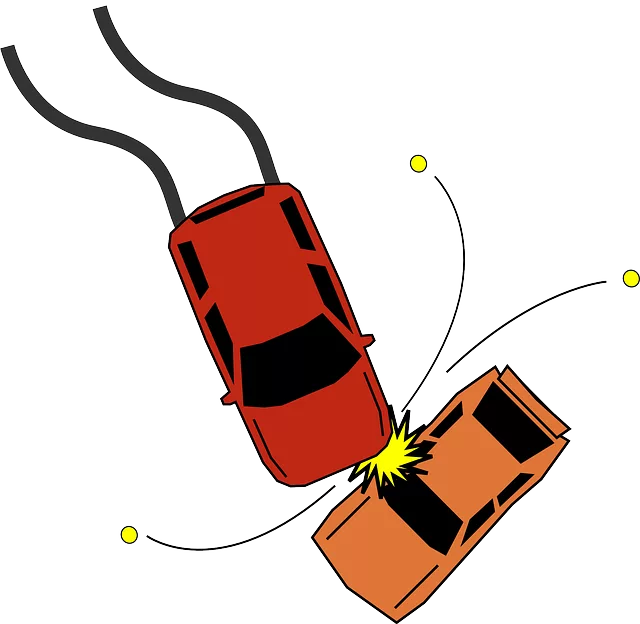Cyclist Rights & Pedestrian Accident Lawsuits in Manhattan: A Comprehensive Guide

In Manhattan, understanding cyclist rights and responsibilities, as outlined by NYC laws, is vital f…….
In the bustling metropolis of Manhattan, where concrete jungles rise and traffic congestion is a daily reality, a revolutionary concept has emerged to transform urban commuting—the “Cyclist Right of Way.” This innovative approach aims to empower cyclists by establishing their right of way on city streets, fostering a harmonious coexistence between bicycles and motor vehicles. The article delves into the intricacies of this initiative, exploring its historical roots, global impact, economic implications, technological advancements, regulatory frameworks, and the challenges it faces. By examining these aspects, we gain valuable insights into how Manhattan is paving the way for sustainable urban mobility, inspiring other cities worldwide.
The concept of giving cyclists dedicated rights on city streets is not new. Many European cities have long recognized cycling as a vital mode of transportation, implementing laws to protect and promote it. However, Manhattan’s unique approach has sparked global attention due to its comprehensive strategy and successful implementation.
In recent years, Manhattan took bold steps to address the growing number of cyclists on its roads and the often tense interactions between cyclists and motorists. The “Cyclist Right of Way” initiative was born out of a need to define and enforce clear guidelines, ensuring safety and efficiency for all road users. This concept revolves around granting cyclists legal protection, allowing them to take up their rightful place on the road, away from vehicular traffic.
Core Components:
Manhattan’s innovative approach to cyclist rights has not gone unnoticed worldwide. This initiative has sparked a global dialogue on urban mobility, inspiring cities across the globe to reevaluate their cycling infrastructure and policies. The concept of providing cyclists with dedicated space and legal protection has gained traction, leading to several key trends:
The “Cyclist Right of Way” initiative has significant economic implications, both direct and indirect.
Market Dynamics:
Investment Patterns:
Economic System Integration:
Technology plays a pivotal role in enhancing the effectiveness of cyclist rights initiatives. Several innovations have emerged to support and promote sustainable urban mobility:
The success of the “Cyclist Right of Way” initiative heavily relies on robust policies and regulations. Manhattan has taken a comprehensive approach to ensure its effectiveness:
Despite its numerous benefits, the “Cyclist Right of Way” initiative faces several challenges:
1. Driver Resistance: One of the primary obstacles is resistance from some drivers who perceive cyclists as a hindrance or threat. To address this, educational campaigns focus on promoting mutual respect and understanding between road users.
2. Infrastructure Limitations: In some areas, physical infrastructure may not support dedicated bike lanes due to narrow streets or heavy traffic. Creative solutions, such as shared lane markings and flexible traffic management, are being implemented.
3. Enforcement Consistency: Ensuring consistent enforcement of cycling laws across the city is crucial. Regular training sessions for traffic officers and utilizing technology like camera systems help maintain fairness and consistency.
Several cities worldwide have successfully implemented similar cyclist rights initiatives, providing valuable insights into best practices:
Amsterdam, Netherlands: Amsterdam’s extensive cycling network and tolerant driving culture make it a leader in urban cycling. The city has invested heavily in infrastructure, resulting in high cycling rates and a seamless integration of bicycles into daily life.
Copenhagen, Denmark: Copenhagen’s “Super Block” concept involves creating large blocks closed to vehicular traffic, prioritizing cyclists and pedestrians. This design has led to a significant increase in cycling rates and improved overall urban ambiance.
Berlin, Germany: Berlin’s “Cycle Superhighways” are dedicated cycling routes connecting different parts of the city. These highways provide safe and efficient travel for commuters, reducing congestion and emissions.
Manhattan’s “Cyclist Right of Way” initiative represents a significant step towards creating sustainable, livable cities. By recognizing cyclists as legitimate road users and providing them with dedicated space, the city has fostered a culture of mutual respect and responsible sharing. This approach not only improves cyclist safety but also contributes to reduced traffic congestion, better air quality, and enhanced urban aesthetics.
As cities worldwide continue to grapple with urban mobility challenges, Manhattan’s success story serves as an inspiring model. The global dialogue on cycling rights and infrastructure development is gaining momentum, leading to more inclusive and sustainable transportation systems. Through collaborative efforts, innovative policies, and a commitment to shared spaces, the future of urban mobility looks increasingly bicycle-friendly.

In Manhattan, understanding cyclist rights and responsibilities, as outlined by NYC laws, is vital f…….

In the bustling city of New York, understanding your rights as a cyclist is crucial, especially when…….

In Manhattan, understanding local laws regarding cyclist rights of way is vital for safety in active…….

In Manhattan, understanding cyclist right of way laws is crucial for safe roads. Cyclists have equal…….

In bustling Manhattan, understanding cyclist right-of-way laws is crucial for safety. Cyclists have…….

Cyclist right of way in Manhattan is governed by New York City laws, with both cyclists and motorist…….

In Queens and Manhattan, New York State law governs slip and fall cases, focusing on negligence, wit…….

Cyclists in Manhattan have legally protected right-of-way, similar to vehicle operators, at marked a…….

In Manhattan, cyclists have equal right-of-way as motorists, with drivers required to yield during t…….

In Manhattan, cyclists have specific rights, mirroring motor vehicle privileges, including full lane…….